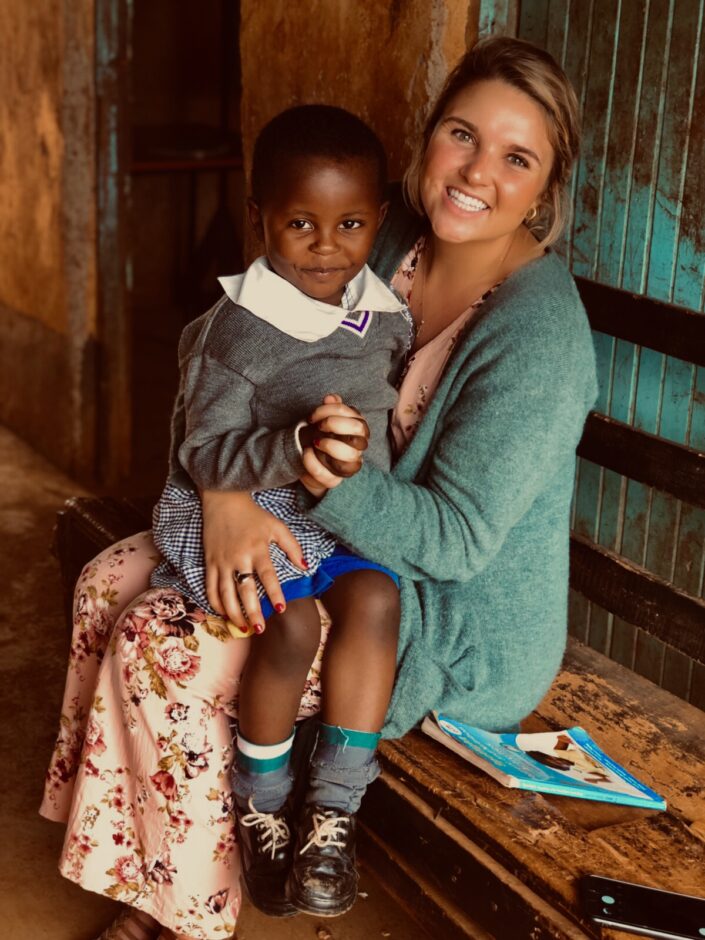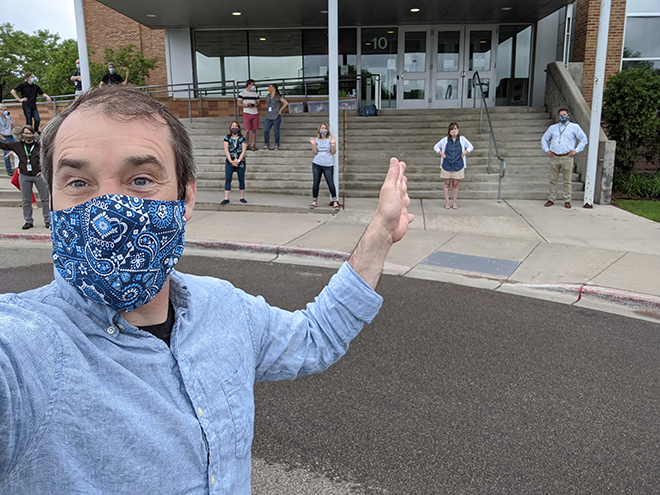For many Minnesota State Mankato students already working in the K-12 education field, a major pivot to distance learning happened in March when the pandemic resulted in school closures across the state.
Spring 2020 graduate Sammy Stoelk said educators found themselves in an “all hands on deck” situation to get everyone ready to teach online in just a couple of weeks.

Stoelk had been student teaching in Kenya in January and part of February. The study-abroad experience was in the middle of a year-long student-teaching assignment in a fourth grade classroom at St. Peter Public Schools. When she left for Kenya, she said the virus still wasn’t much of a concern in the U.S. When she flew home, the virus was all over the news.
“I left for Kenya, came back for a month, and then our school shut down. It happened so fast,” said Stoelk, an Elementary Education graduate. Because she was more tech savvy than others, she stepped up to help teachers in the St. Paul district. “We had Google Classroom when I was in middle and high school; technology had slowly become a part of our education. So I felt comfortable using apps and helping to create material (when we went to distance learning).”
In Edina Public Schools, fellow spring 2020 graduate Sean Beaverson was also in the throes of upheaval—but with the added pressure of being on the very team in charge of ensuring all teachers in his district could make the quick transition to distance learning.

“We had been talking about the virus as early as January and had been working since the fall on e-learning plans in case of snow days, so we could still count those days as attendance,” said Beaverson, a digital learning specialist who was finishing up with his Specialist Degree program in Educational Leadership at Minnesota State Mankato.
“We did a lot of initial planning for, ‘What if school was out for a week? What if school was out for two weeks?’”
A few days before the governor announced schools would close, Beaverson said the district already had a contingency plan and tools in place for distance learning. Then the flood gates opened March 15, when the closure announcement was made, and many 12- to 14-hour days were spent on implementation and getting 8,500 kids and hundreds of educators on the same page.
“We had been making a case for why (digital learning) was important for 10 years, and then it switches to an emergency, and suddenly everybody showed up to our first Google Meet professional development session,” Beaverson said.
“Some of the challenges, like with an elementary-focused teacher, was trying to get people to imagine how to be connected to 8-year-olds in an online environment and helping people to understand a digital classroom space.”
They held “Alarm Clock” professional development sessions daily at 8 a.m. Later they worked with the Minnesota Department of Education to invite educators from across the state and even internationally for online training sessions.
“Teachers needed it. We needed to change the conversation to, ‘What does effective teaching look like online?’” Beaverson said.
Both Beaverson and Stoelk said they were proud of how everyone seemed to strap in and engage in the work, including what the Herculean task of delivering thousands of Chromebooks and iPads to students in Beaverson’s district.
Both also said their districts are better for this experience.
Stoelk will start her first full-time teaching job in fourth grade this fall in St. Peter, and she’s excited to engage her students in new ways, including classroom Zoom meetings and maybe social media accounts to stay engaged outside the classroom. But she’s hoping mostly to engage with her students face-to-face.
“One hundred percent,” she said.
Beaverson, a strong proponent of racial justice in the classroom, wants the progress made in student access to equipment and connection to be sustained, even after students head back to the classroom.
“We want to take all we’ve learned and reap the benefits going forward,” Beaverson said. “We hope school ends up looking different because of this emergency.”
Speak Your Mind